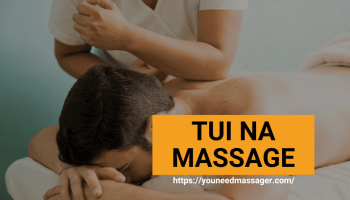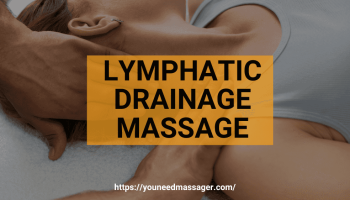List of Various types of Massages
Imagine massage as a way of talking to your body, using hands instead of words. It’s like telling your muscles to relax, your pain to go away, and your mind to take it easy. People have been practicing this art for thousands of years, and over time, they’ve discovered many different ways to do it, each with its own special touch.
Table of Contents
1. Swedish Massage: The Classic Relaxer
What is Swedish Massage?
Swedish massage is like the gentle, calming friend who helps you unwind after a long day. It uses smooth strokes, kneading, and circular movements on your muscles with massage oil.
History
In the early 19th century, a Swedish doctor named Per Henrik Ling developed this method to help his muscles recover after exercise. It’s now one of the most popular massages in the world.
Benefits
- Helps you feel relaxed and calm
- Eases muscle tension
Advantages
- Perfect for beginners
- Widely available
Disadvantages
- May not be deep enough for those with severe muscle tightness
2. Deep Tissue Massage: The Intense Muscle Relief
What is Deep Tissue Massage?
Think of deep tissue massage as the strong, silent type that reaches deep into your muscles to sort out the knots and tension. It uses slow, forceful strokes to target deep layers of muscle and connective tissue.
History
This technique evolved from traditional massages as a way to deal with chronic muscle pain and injuries.
Benefits
- Reduces chronic pain
- Helps with muscle healing
Advantages
- Deeply therapeutic
- Targets specific problem areas
Disadvantages
- Can be a bit uncomfortable
- Not recommended for relaxation
3. Reflexology: The Foot Whisperer
What is Reflexology?
Reflexology is like a detective that finds clues about your health in your feet. By pressing specific points on your feet (or hands), it aims to improve health throughout your body.
History
This practice traces back to ancient China and Egypt, where it was believed that certain areas of the feet corresponded with other parts of the body.
Benefits
- Promotes relaxation
- Enhances overall wellness
Advantages
- Non-invasive
- Can be done anywhere
Disadvantages
- Skeptics question its effectiveness beyond relaxation
- Not a full-body massage
4. Tui Na: The Traditional Healer
What is Tui Na Massage ?
Tui Na is an ancient Chinese massage that uses rhythmic compression along energy channels of the body, as well as techniques that manipulate and lubricate the joints.
History
Part of Traditional Chinese Medicine, Tui Na has been practiced for over 2,000 years to balance the body’s energy and improve health.
Benefits
- Improves circulation
- Balances body energy
Advantages
- Holistic approach to physical wellness
- Can be tailored to individual needs
Disadvantages
- Might require multiple sessions for best results
- Less focused on relaxation
5. Aromatherapy Massage: The Scented Soother
What is Aromatherapy Massage?
Aromatherapy massage combines the gentle touch of massage with the therapeutic aromas of essential oils to enhance your mood and relieve stress.
History
Using essential oils for therapeutic purposes goes back to ancient civilizations, including the Egyptians, Greeks, and Romans.
Benefits
- Reduces stress and anxiety
- Boosts mood
Advantages
- Engages multiple senses for relaxation
- Customizable with different oils
Disadvantages
- Possible allergic reactions to oils
- More expensive due to the cost of essential oils
6. Sports Massage: The Athlete’s Companion
What is Sports Massage?
Sports massage is like a coach for your muscles, especially designed for those who are active and sporty. It helps prepare your muscles for big games and helps with recovery after you’ve been active.
History
It developed to help athletes perform their best and recover quickly. Over time, it has become popular with everyone, not just professional athletes.
Benefits
- Speeds up healing from injuries
- Improves flexibility and performance
Advantages
- Tailored to your sport or activity
- Can be customized for pre-event or post-event needs
Disadvantages
- May be intense if you’re not used to deep massage
- Specificity means it might not address non-sport-related tension as effectively
7. Trigger Point Massage: The Knot Buster
What is Trigger Point Massage?
Trigger point massage focuses on releasing “knots” in your muscles, which are areas of tight muscle fibers that can cause pain elsewhere in the body.
History
This approach was developed to address specific areas of tension and pain that affect the body’s overall function.
Benefits
- Relieves localized pain
- Can help alleviate chronic pain conditions
Advantages
- Targeted relief where you need it most
- Can offer long-term pain management solutions
Disadvantages
- Can be uncomfortable during the massage
- Might require multiple sessions for full benefits
8. Thai Massage: The Energizing Stretch
Thai massage combines stretching, pulling, and rocking techniques to clear energy blockages and relieve tension. It’s like yoga, but someone else does the work for you.
History
Originating in Thailand over 2,500 years ago, this massage is a blend of influences from Indian, Chinese, and Southeast Asian cultural spheres.
Benefits
- Enhances flexibility
- Boosts energy and improves circulation
Advantages
- Full-body impact
- Incorporates mindfulness and relaxation
Disadvantages
- Can be intense, especially for those not used to stretching
- Not the best choice for those looking for a gentle, relaxing experience
9. Hot Stone Massage: The Warm Embrace
What is Hot Stone Massage?
Hot stone massage uses smooth, heated stones placed on specific parts of your body. The warmth helps relax and ease tight muscles.
History
This technique has been used in various forms by different cultures for centuries, including by Native Americans for healing purposes.
Benefits
- Deep muscle relaxation without intense pressure
- Helps melt away stress
Advantages
- The warmth provides extra comfort and relaxation
- Can improve circulation
Disadvantages
- Heat may not be suitable for everyone
- Limited focus on specific muscle release due to the general nature of the technique
10. Prenatal Massage: The Gentle Nurturer
What is Prenatal Massage?
Prenatal massage is specifically designed for pregnant women. It helps alleviate the aches and pains that come with pregnancy.
History
This specialized form of massage has been practiced for centuries to support women physically and emotionally during pregnancy.
Benefits
- Reduces pregnancy discomfort
- Enhances mood and sleep
Advantages
- Tailored to the unique needs of pregnancy
- Safe for both mom and baby when performed by a trained therapist
Disadvantages
- Certain massage techniques and areas must be avoided during pregnancy
- Not recommended for those with certain pregnancy complications
11. Shiatsu Massage: The Pressure Point Healer
What is Shiatsu Massage?
Shiatsu massage is a Japanese technique that uses finger pressure to stimulate specific points on the body, similar to acupuncture but without the needles.
History
Shiatsu developed in Japan in the 20th century, drawing on traditional Chinese medicine concepts.
Benefits
- Restores energy balance
- Reduces stress and promotes relaxation
Advantages
- Non-invasive and can be done through clothing
- Focuses on holistic well-being
Disadvantages
- May not provide immediate relief for deep muscle tension
- Effectiveness can be subjective and varies from person to person
Conclusion
Each of these massage types offers distinct benefits, from stress relief and relaxation to improved circulation and relief from muscle tension. Depending on your needs and preferences, you might find one or several of these types particularly beneficial.





